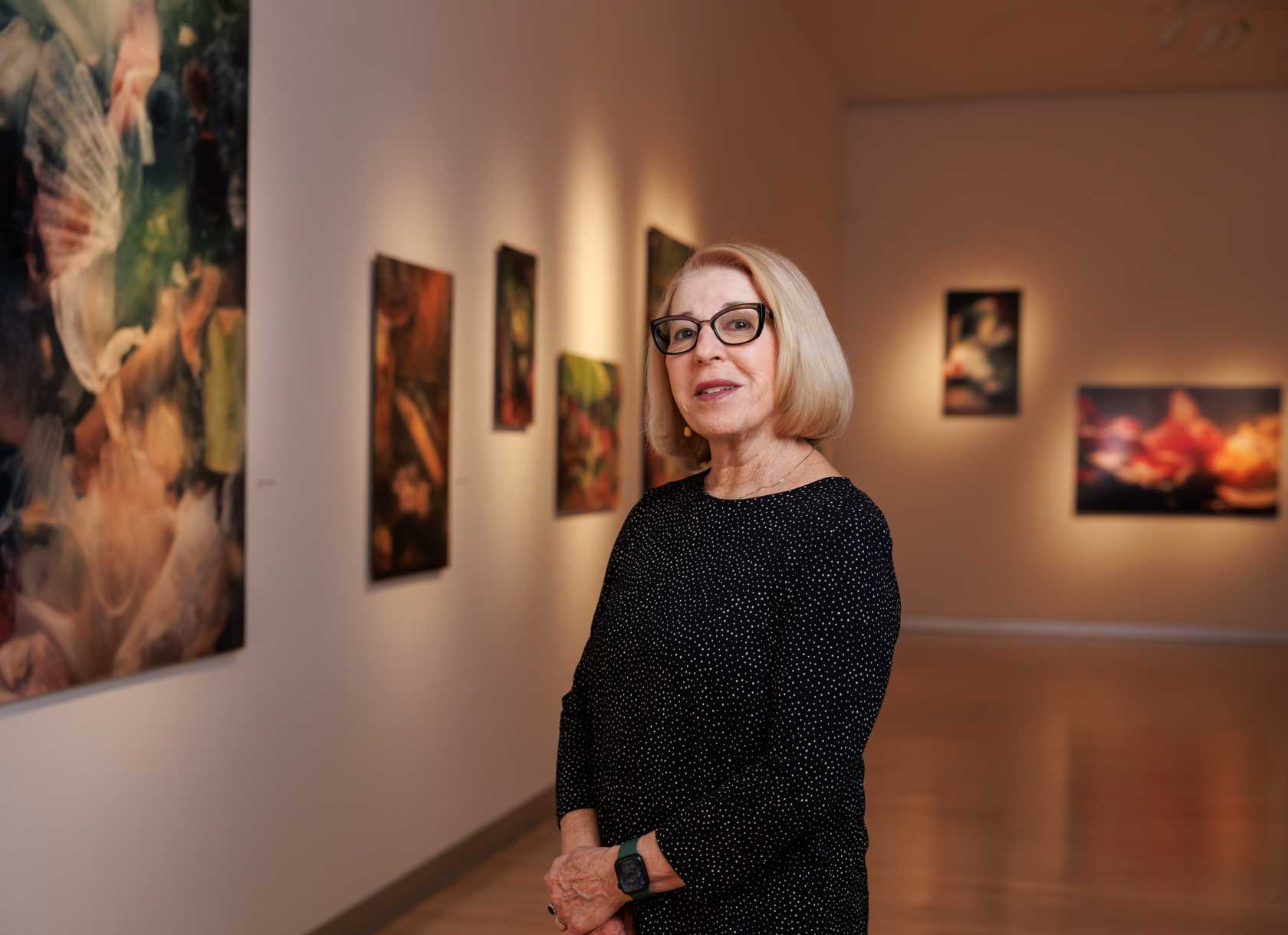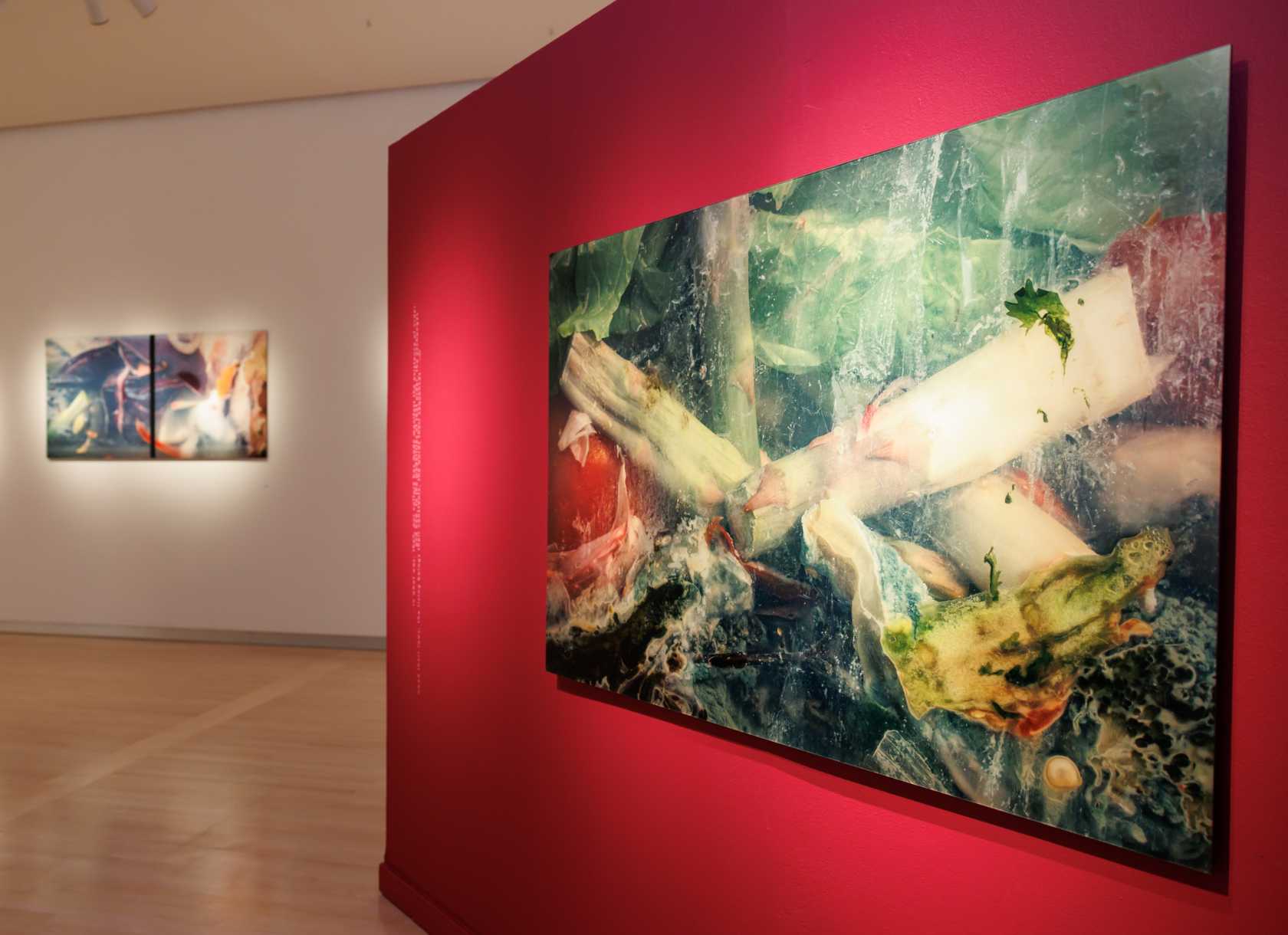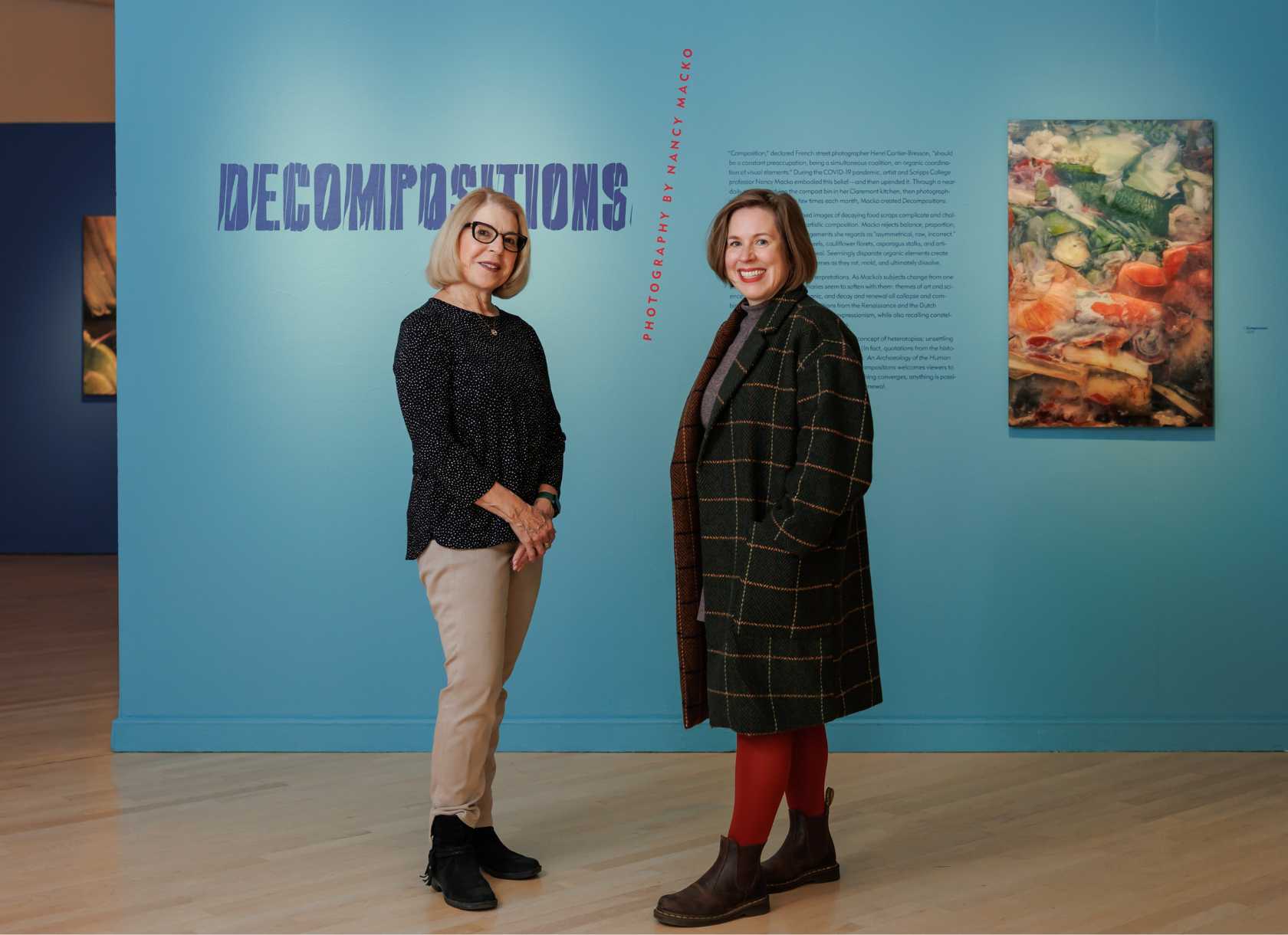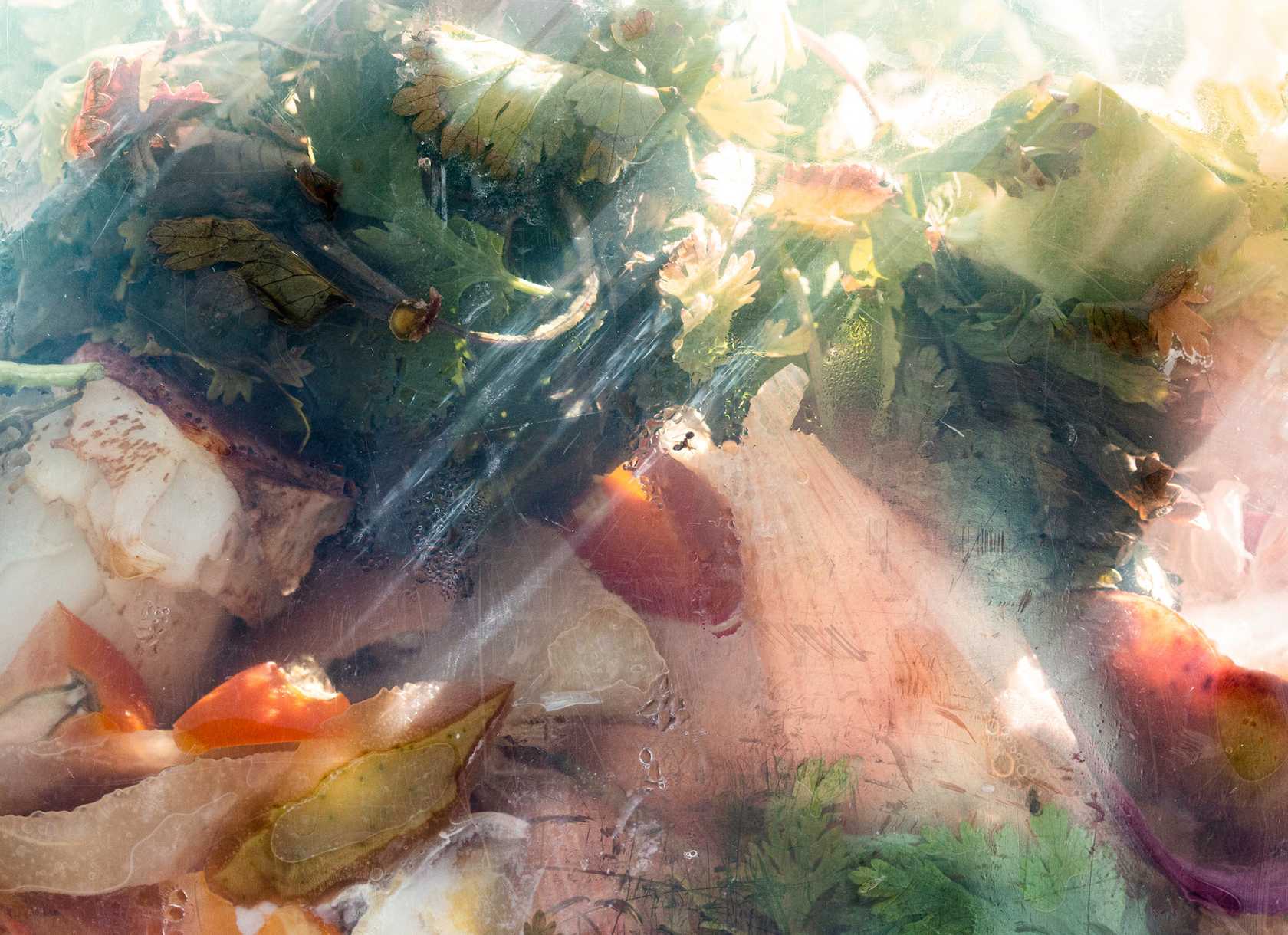
By Emily Glory Peters
For many, the isolation of the COVID-19 lockdown was something to be endured rather than explored. College campuses thinned; shops scrambled to stay afloat; and cultural mainstays like music venues and museums locked their doors—some never to reopen.
While humanity impatiently waited for the pandemic to end, Professor of Art Nancy Macko found revival in the most unexpected place: her compost bin.
“I took a photo of asparagus stalks lined up like a campfire emoji—it was so tender and incredible, and it happened by itself because of physics. That inspired me,” says Macko of Asparagus Kindling, a favorite from her compost bin photographs. “The macro lens exploded hidden relationships in the decaying scraps—it revealed what you’d never see otherwise.”

Nancy Macko’s Asparagus Kindling on display in the Ruth Chandler Williamson Gallery
Debuting at Scripps’ Ruth Chandler Williamson Gallery this past fall, Decompositions: Photography by Nancy Macko features 38 never-before-seen images capturing the transformation of the ordinary into the extraordinary, where everyday items like onion skins and apple peels recall artistic traditions from the Renaissance to Surrealism. Meditating on the fragile relationship between decay and renewal, the photographs blur the lines between realism and abstraction.
Gardens, grief, and growing comfortable with discomfort
For Macko, her journey to Decompositions began in the early aughts when she was caring for her aging mother. They spent hours together in the garden, with Macko snapping pictures of her mom and close-up shots of flowers.
After her mother’s passing, she layered the images with religious iconography in a visual memoir—a creative mourning process that sparked her own musings on death. It’s a theme that’s colored Macko’s work ever since.
“People can be afraid to talk about the body’s recycling, about where the spirit goes. But as a teacher at a liberal arts college like Scripps, I’ve learned to ask hard questions,” she says. “The deeper message of Decompositions is to face your own mortality in an optimistic, accepting way, knowing we all somehow end.”

Professor of Art Nancy Macko with the Gabrielle Jungels-Winkler Director of the Ruth Chandler Williams Gallery Erin Curtis
Decompositions is exceptional beyond its ethereal subject matter. It is the first show curated by Director of the Ruth Chandler Williamson Gallery Erin Curtis and the first solo exhibition at the gallery for Macko, who has been a member of Scripps’ faculty since 1986. An ecofeminist at heart, Macko shares that shooting Decompositions has also become an educational tool, challenging students to grapple with questions of environmentalism, feminism, and their relationship to the nonhuman world.
“The show influenced my teaching—it had to,” she says. “There’s this thought that if you own and mold nature, you’ll get money, prestige, power. But ‘nature is going to nature’ without us, whether I photograph it or not—and it may respond to our actions in ways that inconvenience us. The show is a way of giving nature a voice.”
Macko’s photographic method aligns with nature’s dominance. While crediting her wife Jan as “the curator of the bin,” she remains hands-off with the scraps once they’re discarded, allowing arrangements to unfold on their own. From there, her lens scopes out the painterly in the rot, beauty in the goo, and hues in the light: the blueprints of new life.
Taking Decompositions beyond Scripps College
Beyond the gallery walls, Macko’s art has found a home in surprising places. She recently worked with Scripps’ Office of Gift Planning to donate pieces to The Nucleus, the new science center for Scripps and Pitzer Colleges. Steeping fine art in a STEM environment feels emblematic of Scripps, where breaking down silos between disciplines is a way of life.

Nancy Macko, Divine Intervention, 2022, Archival Pigment Print, 40 x 60 inches
“People love seeing art in a science-centered space,” Macko says, praising her colleague, Professor of Biology Jennifer Armstrong, for the collaborative idea. “I hope it’s a trend that will continue as Scripps expands.”
For Macko, the significance of Decompositions lies not only in its message and Scripps ties, but also its resonance with broader audiences. Although she’s exhibited extensively at home and abroad over the years, she considers the show her “most important body of work to date”—and plans to travel it to other museums and galleries so viewers can engage with its imagery and wrestle with its unsettling questions.
Whatever their interpretation, Macko hopes they leave with the courage to push back on their discomfort with the “final” stages of life. After all, it may not be the end we expect.
“Ask questions,” she urges. “Don’t be scared about what you’re going to learn.”
Decompositions is on display at the Ruth Chandler Williamson Gallery until January 12, 2025. To learn more about the gallery, click here.

